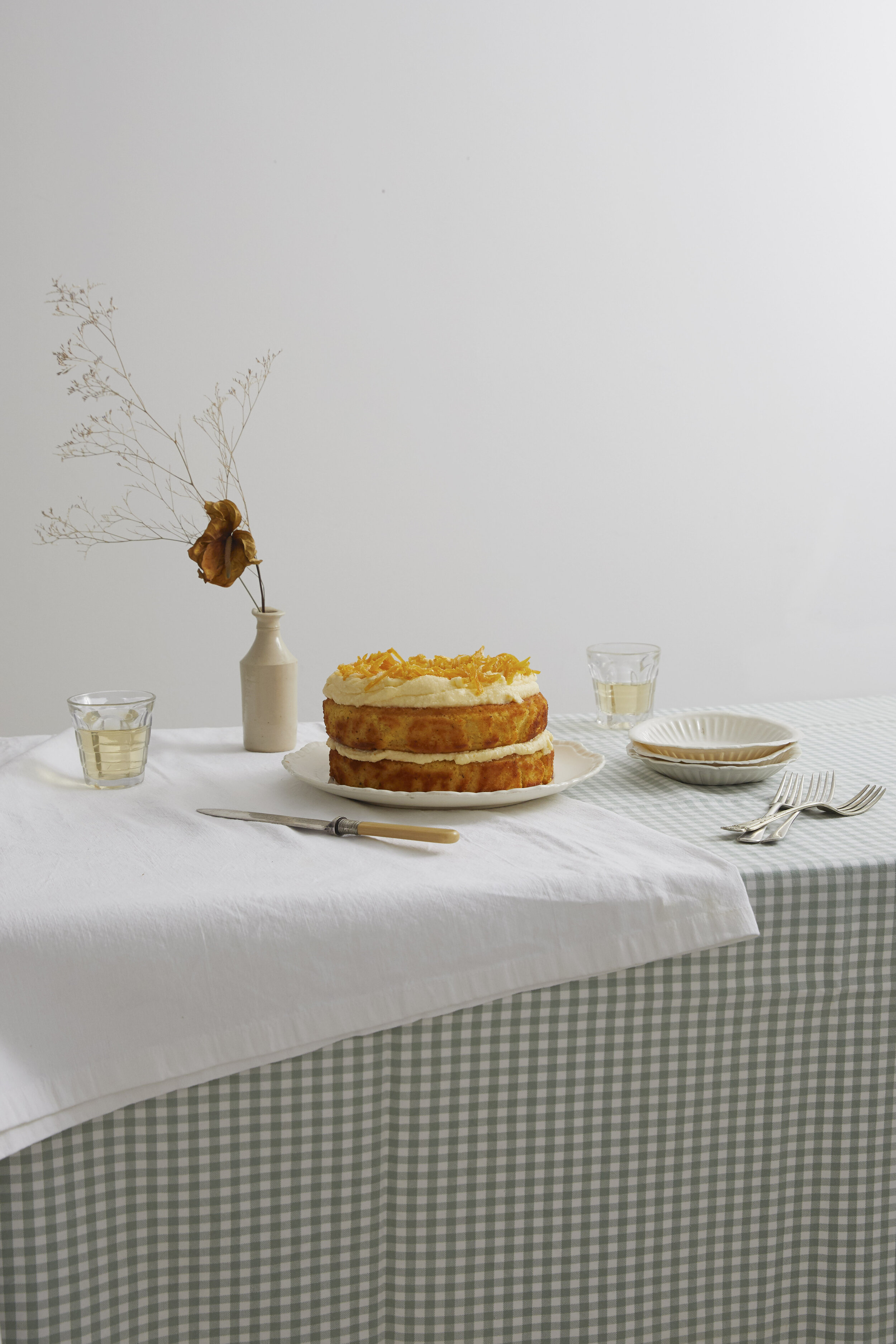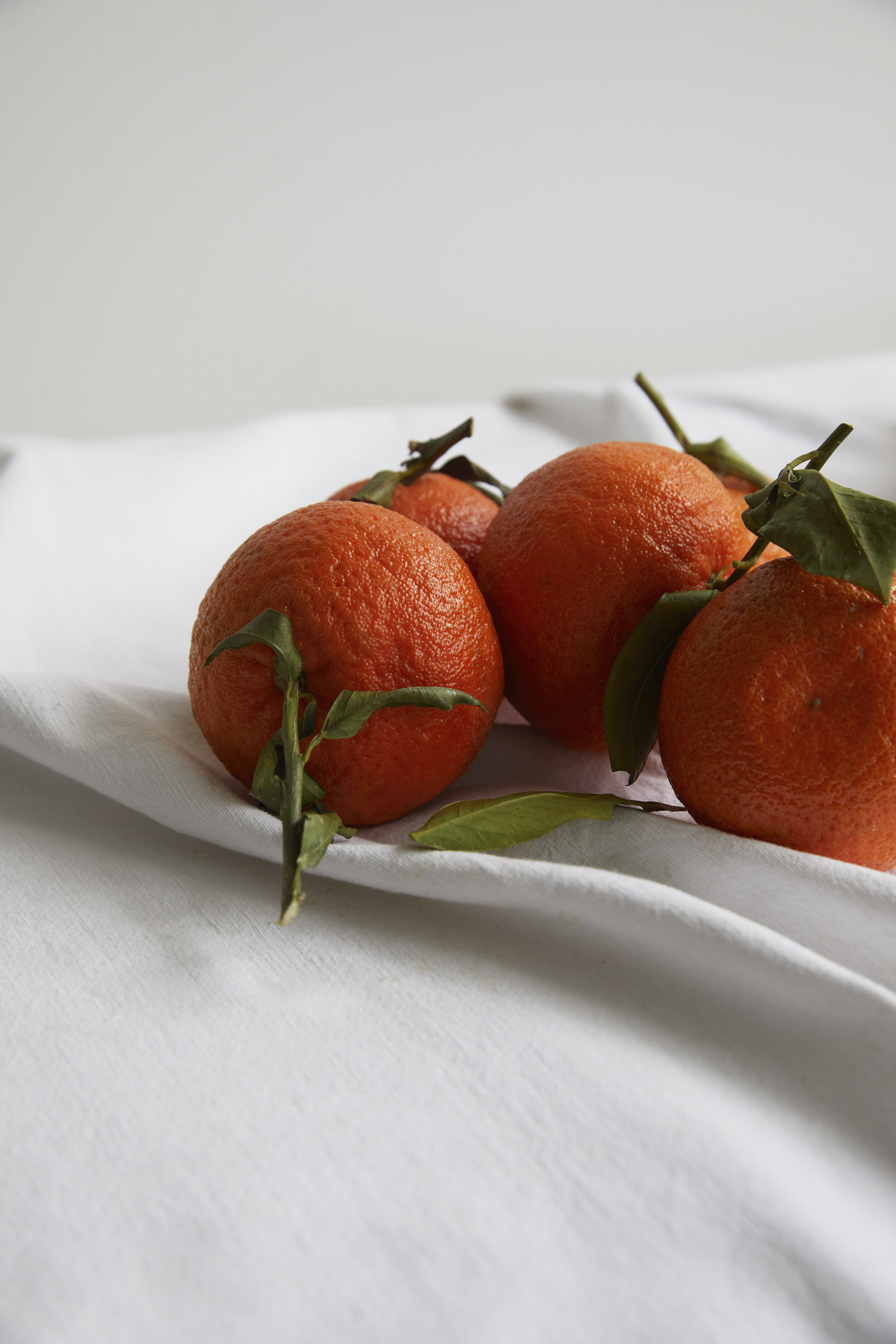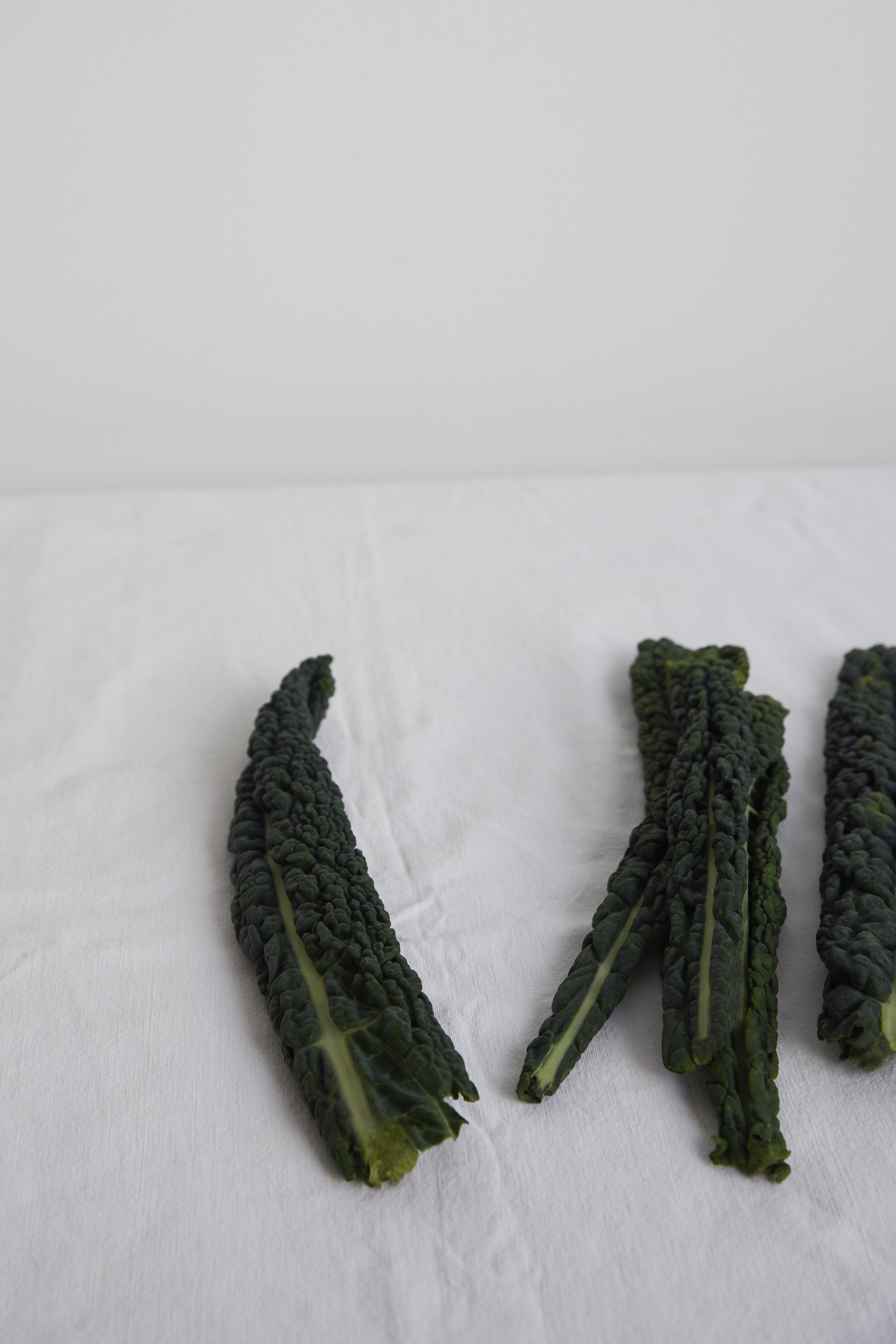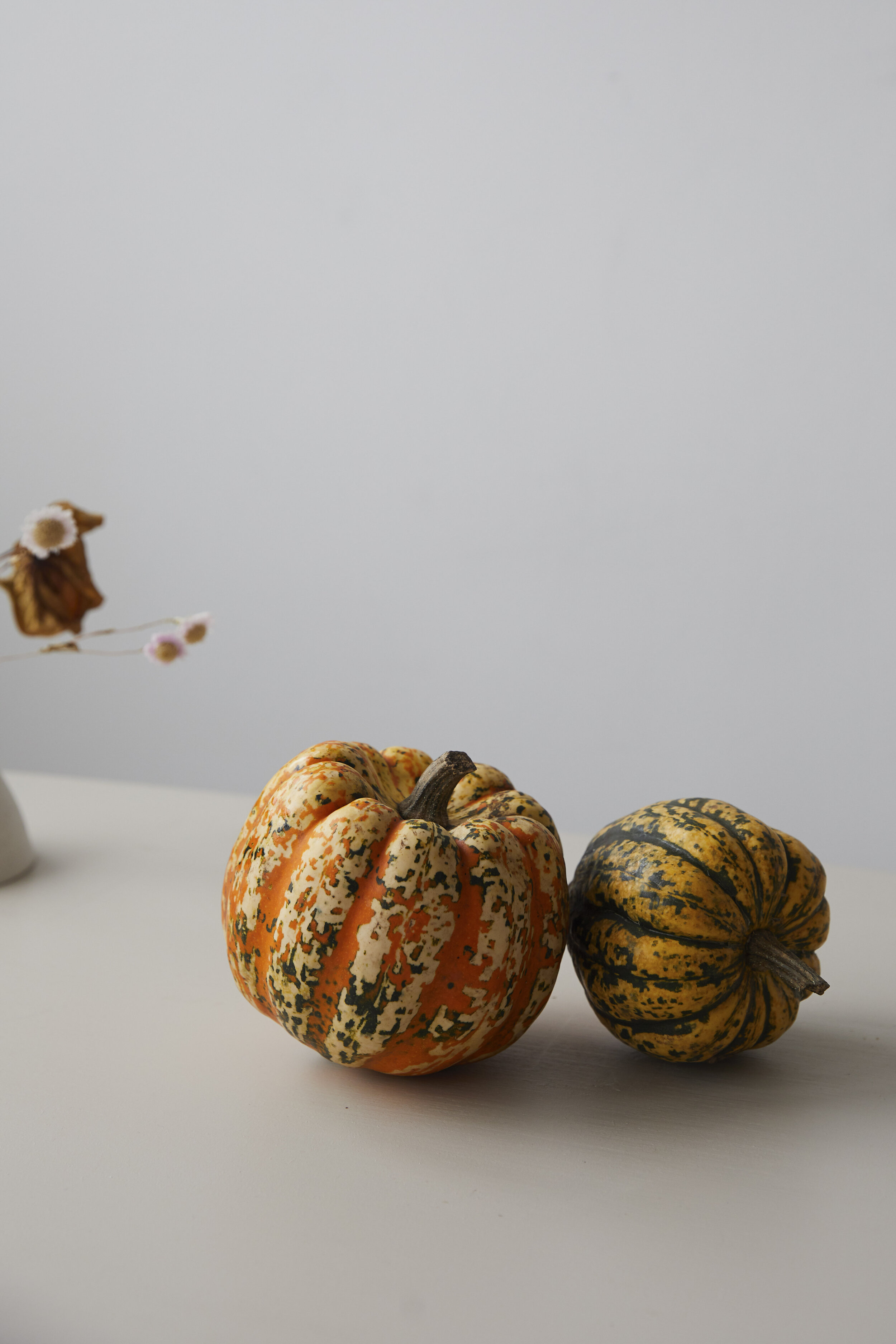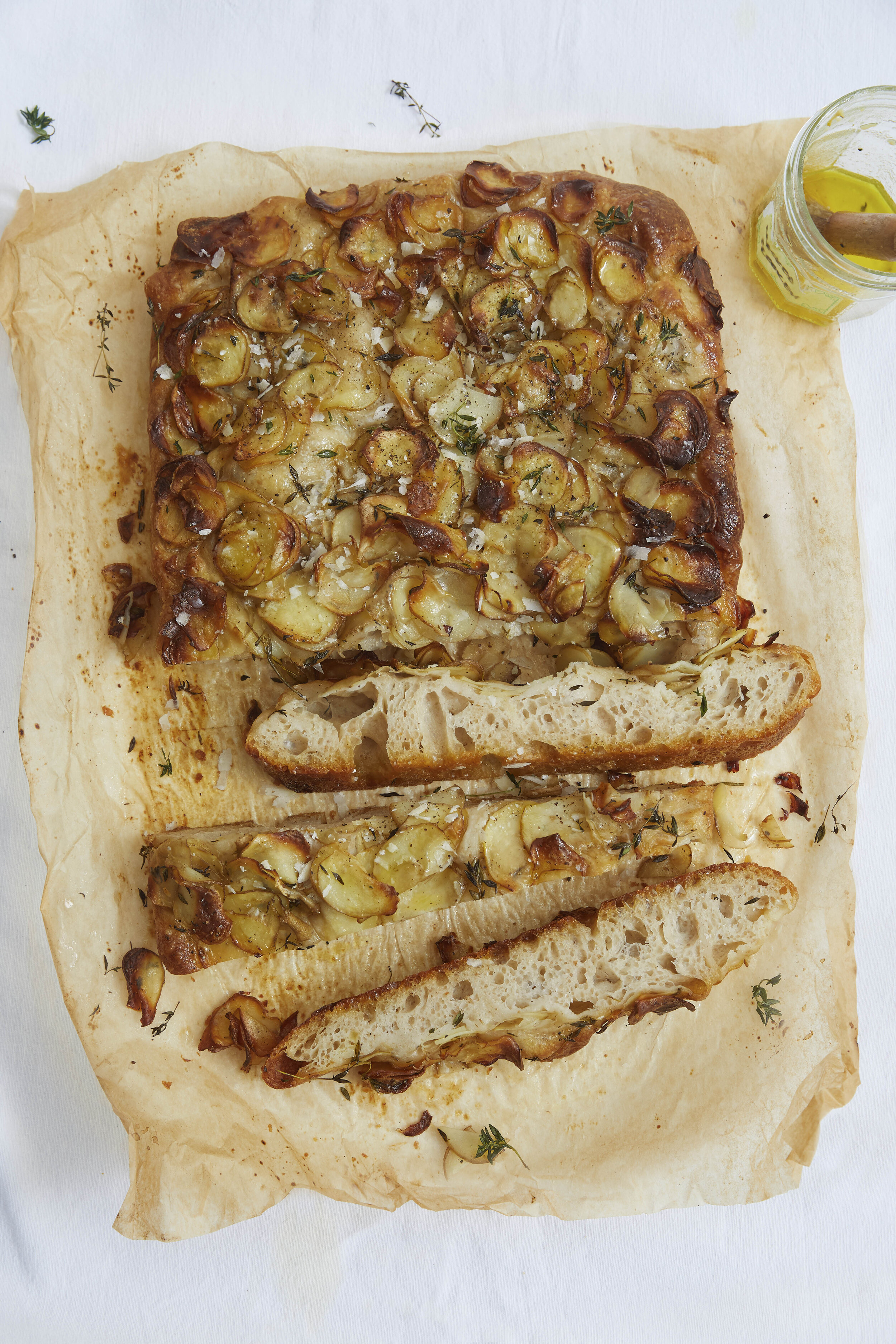Lockdown Leftovers
Photography by Clare Lewington
Food Styling by JoJo Jackson
Entering into a third lockdown with many people living modestly due do to the new economic challenges. Food stylist Jojo Jackson has created three hearty recipes aimed at using up leftovers and giving you a generous hug.
Clementine, almond & rosemary cake with clementine icing
An adaption of Queen Nigella’s recipe, this cake is a clever way to use up a glut of clementines, which are always hanging around after Christmas. It’s easy to make, deceivingly moist and the ingredients are pleasingly few. It works equally well at teatime, as it does here, sandwiched with icing and ready for a party.
Ingredients
Serves 8-12
For the cake
375g clementines (approx. 4)
225g caster sugar
250g ground almonds
1 tsp baking powder
2 sprigs rosemary, leaves finely chopped
For the icing
2 large egg whites
150g caster sugar
175g unsalted butter, softened
2 clementines, zest and juice
Instructions
Add the clementines to a pan and cover with cold water. Bring the water to the boil and simmer, covered with a lid, for 2 hours, until the clementines are completely soft. Remove the clementines from the pan and, when cool, cut each clementine in half and remove the pips. Add the clementines to a food processor and blitz until smooth.
Meanwhile, preheat the oven to 180C and line two 18cm sandwich tins.
Beat the eggs and sugar until trails form, then add the ground almonds, baking powder, rosemary and mix well. Add the blitzed clementines and mix again.
Pour the mixture into the tins and bake for 35-40 minutes – or until a skewer comes out clean. Check near the end, as you might need to cover them if they are browning too much. Remove from the oven and leave to cool in the tin.
To make the icing, set a heatproof bowl over a pan of just simmering water and add the egg whites and sugar. Whisk until the sugar has dissolved – it should feel smooth between your fingers and warm to touch. Remove the bowl from the pan and, using an electric whisk, whisk until soft peaks form and the mixture is completely cool.
Very gradually, add the butter and continue to whisk, until it has all been incorporated. Slowly add the clementine juice and zest, and whisk until smooth.
To assemble, take one of the cakes, flip it upside down and spread one-third of the icing on top; repeat with the second cake and remaining icing.
Serve straightaway – any leftover will keep for a few days in a cool place.
Chicken & seasonal vegetable broth
This broth is brilliant base recipe and an economical way to use a chicken. There are endless ways to adapt it, using leftover ingredients or stray vegetables lurking in the fridge. Use the chicken carcass to make stock for your next batch.
Ingredients
Serves 4-6
Approx. 1.6kg chicken, quartered
Olive oil
2 onions, diced
2 large carrots, diced
3 sticks celery, diced
4 garlic cloves, crushed
2 bay leaves
2l good quality or homemade chicken stock
Parmesan rind (optional)
Salt
Black pepper
Instructions
Season the chicken and set aside whilst you prepare the rest of the ingredients – this step is really important for getting a good flavour all the way through the chicken.
Set a large casserole dish over a medium-high heat, and once hot, add enough olive oil to coat the bottom of the pan. Add the chicken pieces, in batches, and brown until deeply golden. Remove from the pan and set aside.
Turn the heat down to medium and add the onion, carrot and celery. Sweat gently for 20 minutes, or until the vegetables have softened and are beginning to brown. Return the chicken to the pan along with the stock, bay leaves, parmesan and seasoning. Bring to the boil and then simmer gently for 45 minutes – remove the breast pieces after 15 minutes.
Once cooked, remove the chicken from the pan and pull the meat from the bones – it should pull away easily. Skim any fat from the surface of the broth. Taste and adjust the seasoning as required.
This soup can be revamped using any vegetables or leftovers you have at hand. Roast any stray vegetables and add before serving, likewise with cooked grains, potatoes or pasta. Here are two possible options:
Cavolo nero, leek, butterbeans, celeriac
Slice 2 large leeks into 1cm rounds and ½ a celeriac into 1cm pieces. Add to a roasting tin with rosemary, olive oil and season well; roast at 190C for 30 minutes, or until the vegetables are tender and nicely browned. Add to the broth with 1 jar butter beans – drained and rinsed – and 200g cavolo nero, roughly chopped. Simmer for a further 10 minutes, or until the cavolo nero is tender.
Roasted carrot, Ottolenghi’s chamoy, almonds, beans, dill
Halve lengthways, 500g Chantenay or baby carrots, and add to a roasting tin with olive oil, 2 tsp runny honey and seasoning. Roast at 190C for 25 minutes, until browned but still retain a bite. Blitz 40g dried apricots, 1 tsp honey or maple syrup, 2 tsp sumac, 45ml lime juice, 1 tsp chilli flakes, 1 garlic clove, 2 tbsp olive oil and a pinch of salt in a food processor until you have a coarse paste. Add the carrots to the broth, along with 1 handful toasted almonds – roughly chopped – 200g cooked mixed beans, dill and top each bowl with a spoonful of chamoy.
Focaccia
Focaccia is a great vessel for all sorts of ingredients, and to that end it’s a great way to use leftovers – here are two suggestions for toppings. Root vegetables work best as they can withstand the cooking; then finish with cheese, herbs, roasted garlic, perhaps some honey and plenty of extra virgin olive oil.
Notes on the focaccia
Ingredients
Serves 8
1 X 500g focaccia dough (I used Martha Lacey’s recipe, which is brilliant)
Instructions
Bake the focaccia at 200C for 35-40 minutes; until golden brown and cooked through. The internal temperature should read 100C, and the bottom of the bread should look opaque and sound hollow when tapped. If it is not ready, cover with foil or baking parchment and return to the oven a little longer.
Remove from the oven leave to cool in the tray before serving.
Topping suggestion 01: Potato, parmesan, thyme
Instructions
Set a colander over a bowl, add the potatoes, toss with a pinch of salt and set aside for 30 minutes. Squeeze out any remaining liquid until no more comes out – a clean J-cloth works well for this. Toss the potatoes with the black pepper, olive oil and two-thirds of the thyme.
Spoon the mixture over the focaccia dough and bake at 200C for 35-40 minutes, until golden brown.
To serve, sprinkle over the remaining thyme leaves, parmesan, olive oil and a pinch of sea salt.
Ingredients
500g baby, or small waxy, potatoes, thinly sliced using a mandolin
Sea salt
Black pepper
100ml olive oil, plus extra to drizzle
10g thyme, leaves picked
20g parmesan (or pecorino), shaved
Topping suggestion 02: Squash, roasted garlic, sage & red onion
Instructions
Set a small frying pan over a medium heat, and once hot, add 1 tbsp olive oil, then the red onion. Cook for 10 minutes, until the onion is beginning to soften but not colour. Remove from the heat and set aside to cool.
Once cool, toss the onion with the squash, sage, olive oil, a pinch of sea salt and black pepper. Spoon the mixture over the focaccia dough and bake at 200C for 35-40 minutes, until golden brown.
To serve, squeeze the roasted garlic out of each clove, mix with the remaining oil and brush over the top of the focaccia. Sprinkle with extra sea salt flakes if you like.
Ingredients
1 red onion, peeled, halved & each half cut into quarters, keeping the root intact
Approx. 400g squash, e.g., butternut, crown prince or pumpkin, peeled, quartered and thinly sliced using a mandolin (no need to peel if using crown prince)
Sea salt flakes
Black pepper
10g sage leaves
100ml olive oil, plus extra for drizzling
1 garlic bulb, roasted

